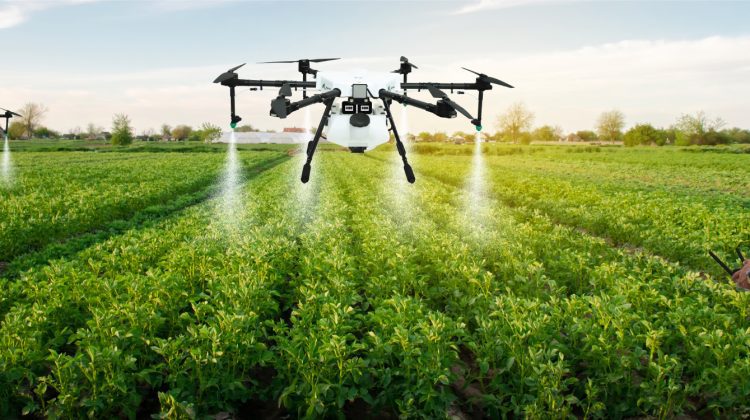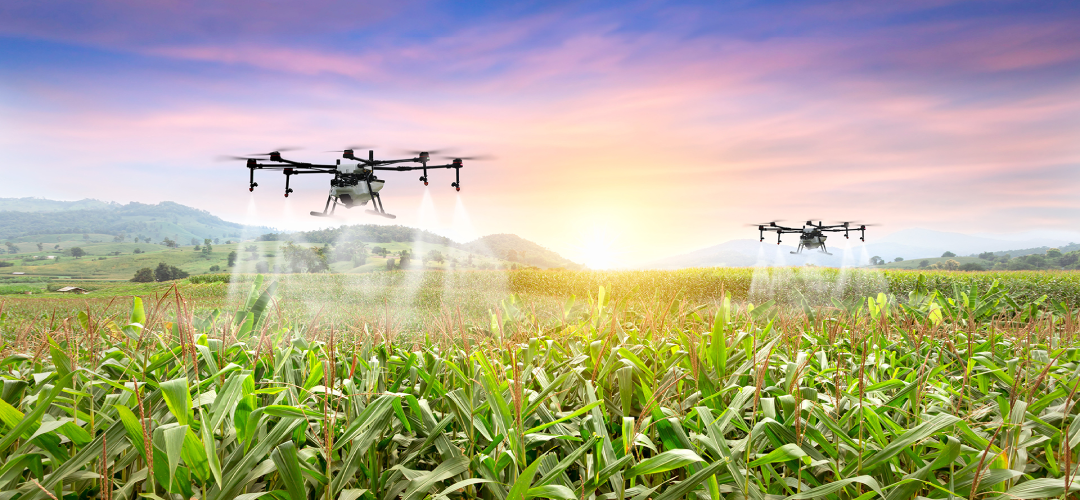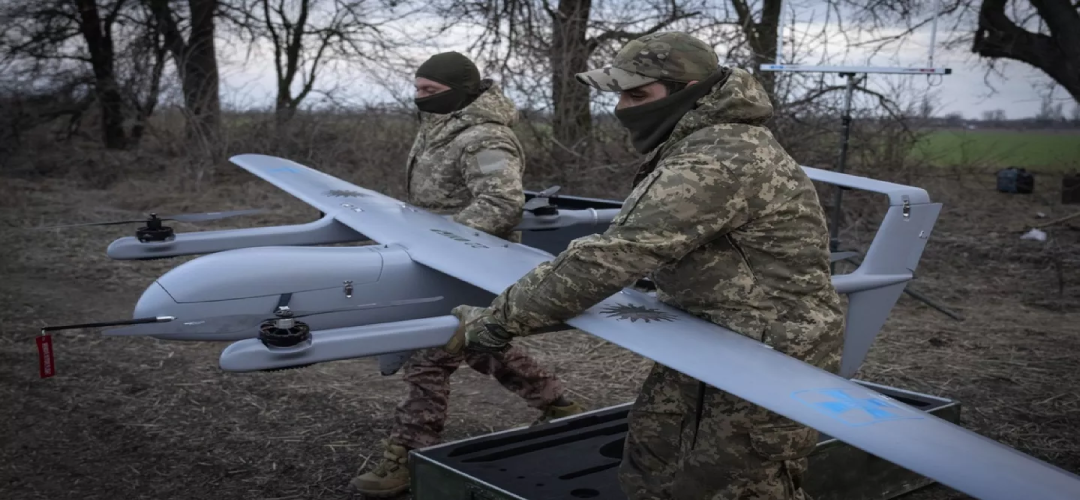Drones, amongst all the other wonderful things they are doing, are also revolutionising agriculture.
Artificial Intelligence (AI) has made rapid inroads in all aspects of 21st-century businesses, and agriculture is not immune to its penetration.
Today’s farmers are adopting AI-guided drones instead of tractors to apply pesticides, herbicides, and fertilisers. Some of the drones are solar-powered and, hence, pocket-friendly and green. Drones are a superior piece of technology that can be adapted to a host of applications to make a farmer’s life easier and more profitable than just spraying pesticides. Agri-drones are user-friendly and cost-effective, equipped with cutting-edge remote sensing, which was the exclusive domain of spy satellites and reconnaissance aircraft until now.
Background
Globally, there is a mad race to invest in drones. We see this phenomenon in Bangalore itself with a swarm of startups being listed daily manufacturing some kind of drones. Many of these startups have been able to attract significant foreign investment.
High-tech drones carry thermal imaging and multispectral sensors, providing crucial data on individual farmers’ crop performance across multiple growing methods. The collected data could empower farmers to use water and fertilisers precisely, enabling robust crop growth, holistic health and minimal canopy stress.
Drones can provide a bird’s-eye view of crop fields. “Drones offer a perspective that ground-based methods simply can’t match. They allow farmers to monitor crop health, identify problem areas and make data-driven decisions,” says Dr Maria Lopez from the Universidad de Almería. This state-of-the-art technology can help asses regions in the crop field affected by pests and diseases. Dehydration and plant distress can be monitored and indicated to the farmers directly through mobile systems.
But does all this technological introduction mean that traditional farming methods are dead?
Take pesticide spraying as an example. Japan was the first country in the 1980s to introduce drone technology to agriculture. Since then, the drones have been put through significant tests and modifications to create the current drones featuring the best cutting-edge technology. Recent studies show that current spraying drones can cover a hectare in 10 minutes, with a disparage rate of more than 1 litre per minute. Guided by lasers, the drones reduce the risk of overspraying. This could potentially be the death of traditional farming, five times faster than traditional spraying methods, achieving a 75% uptake rate and reducing planting costs by 85%.
Drone-planting systems have developed manifold, with the capacity to plant up to 36,000 trees per day; they provide a promising solution to the global deforestation problem. Drones can even map forest levels, fire seed pods and plant seeds in a nutritious hydrogel, all of which contribute to cost reduction and improved plating success rates. They have the capacity to collect vital information like field geography and soil composition, contributing to the seed-planting patterns. Multispectral, hyperspectral, and thermal sensing technology is utilised to collect nitrogen levels along with the available irrigation data.
Some drones today are equipped with 3-D mapping technology and even have the capacity to suggest field planning and subsequently create a nutrient map of the harvest. They also have access to real-time data and aerial insights, which were previously unattainable.
Operating drones is relatively easy and very affordable compared to learning fixed-wing flying. The U.S. Federal Aviation Agency (FAA) has regarded all agricultural drone activities as commercial operations, with a minimum requirement of a remote pilot certificate and passing an initial aeronautical knowledge exam.

Analysis
While initially, Indian agriculture focused only on pesticide spraying using drones, the canvas for the use of this versatile machine is vast. Drones personify precision farming, ensuring early crop detection and effective resource management. They can be enabled with advanced sensors to collect accurate data, aiding farmers in optimising inputs, reducing wastage, and increasing yields. Drones can promote sustainable practices, reduce carbon footprints, and enhance profitability, thereby enhancing climate change resilience.
Combating climate change and environmental degradation is crucial for integrating agriculture and technology. Some green drones have been built with the ecological impact in mind, and they aid in assisting with carbon footprint detection and reduction through reduced chemical use and improved resource management. Compared to traditional farming methods, the new age-drone technology has far better ecological innovations.
Drones can more efficiently manage water resources than human intervention. In California’s Central Valley, drones with thermometer sensors have been used to detect soil moisture levels in the vast agricultural fields. This technology mirrors an agro-tech physician who can precisely diagnose areas of the field that are ‘thirsty’ or ‘overhydrated’. These drones feature targeted irrigation that saves water while ensuring crops get optimum moisture, reducing the chances of over-watering or under-watering. The ultimate aim is healthier crops and efficient use of water resources.
Drone technology has assisted in the evolution of crop monitoring; information about crop health has improved due to the installation of high-resolution cameras and multispectral imaging, which combines multiple layers of the same angle taken at different wavelengths. This enables the detection of diseases or early signs of nutrient deficiencies. Drones will undoubtedly have more definite and absolute roles in the future of farming, primarily because of their significant efficiency aligned with the ecological benefits.
The Indian agriculture industry has yet to comprehend the vast versatility of drones in benefiting their fields. The next phase to enter would be the regulations and hurdles one must navigate. Given the technology invested in each drone, governments might consider subsidising them to farmers, making them easy to access. Experts, however, remark on the challenges of subsiding drones for agro-based development, such as regulatory challenges, technological affordability, and imparting skills to farmers to operate drones.
The Indian government and industry stakeholders have initiated programmes and schemes to provide training, subsidies, and supportive policies. Measures have been taken to gradually pave the way for a drone-friendly farming ecosystem. The Indian Ministry of Civil Aviation issued its Drone Rules in 2021. Based upon these rules, the same year, the Indian Ministry of Agriculture promulgated its Standard Operating Procedure for the use of drones in pesticide application for crop protection and for spraying soil and crop nutrients.
Assessment
- The agri-tech sector has the potential to grow rapidly in emerging markets, particularly in regions facing food insecurity, using licensing and open-source technologies. Drones help farmers increase yields, save time, increase return on investment, and provide crop health imaging and water efficiency.
- The subsidised purchase of agriculture drones for Farmers/CHCs/Hi-tech Hubs will make the technology affordable, resulting in widespread adoption. This would make drones more accessible to the common man in India and significantly encourage domestic drone production.
- The agri drone market remains largely untapped, and the farming community remains largely non-tech savvy. The industry needs to mature with proper regulations that take into account the needs of farmers, both rich and poor, and the shrinking farmlands.




